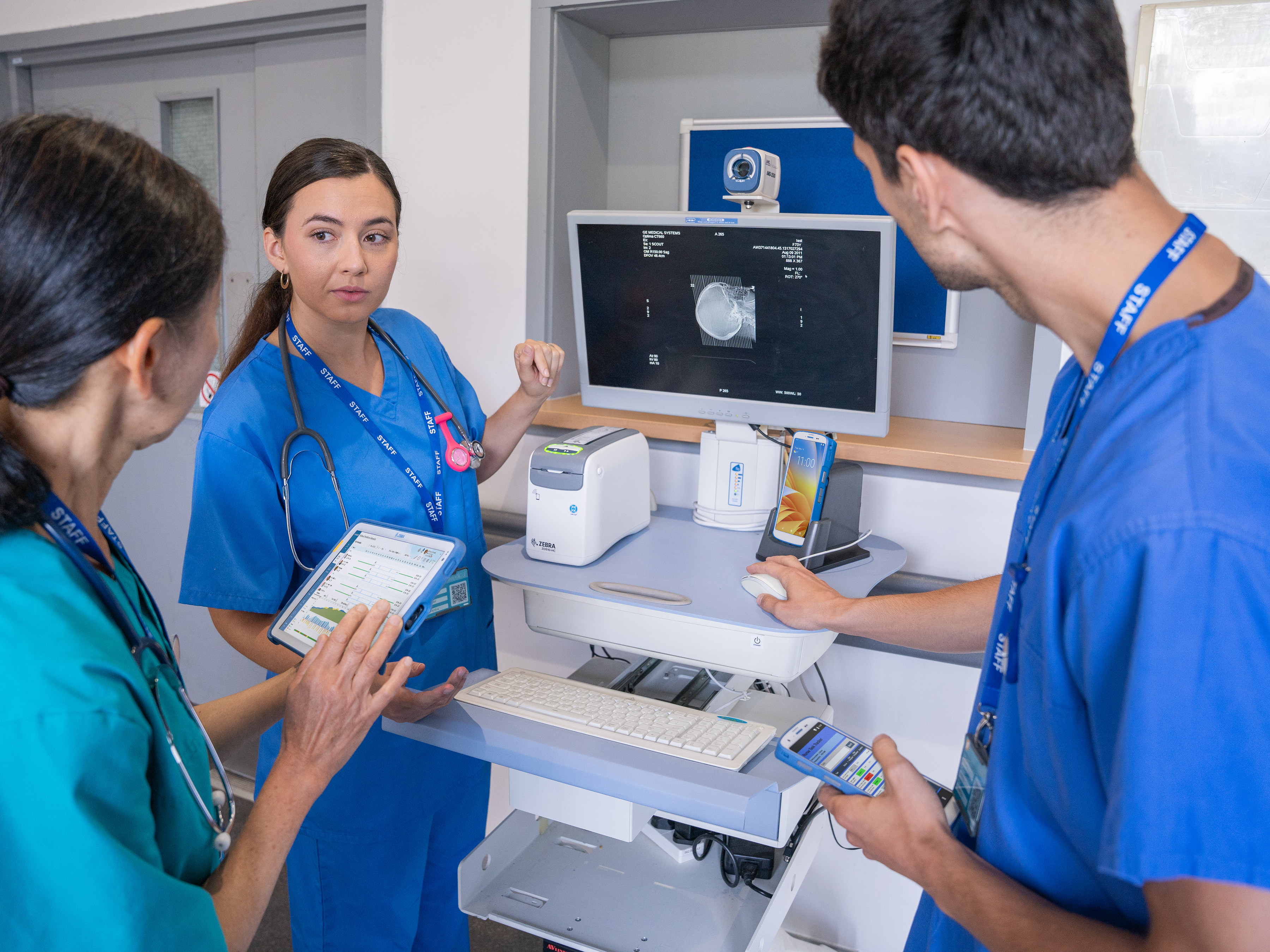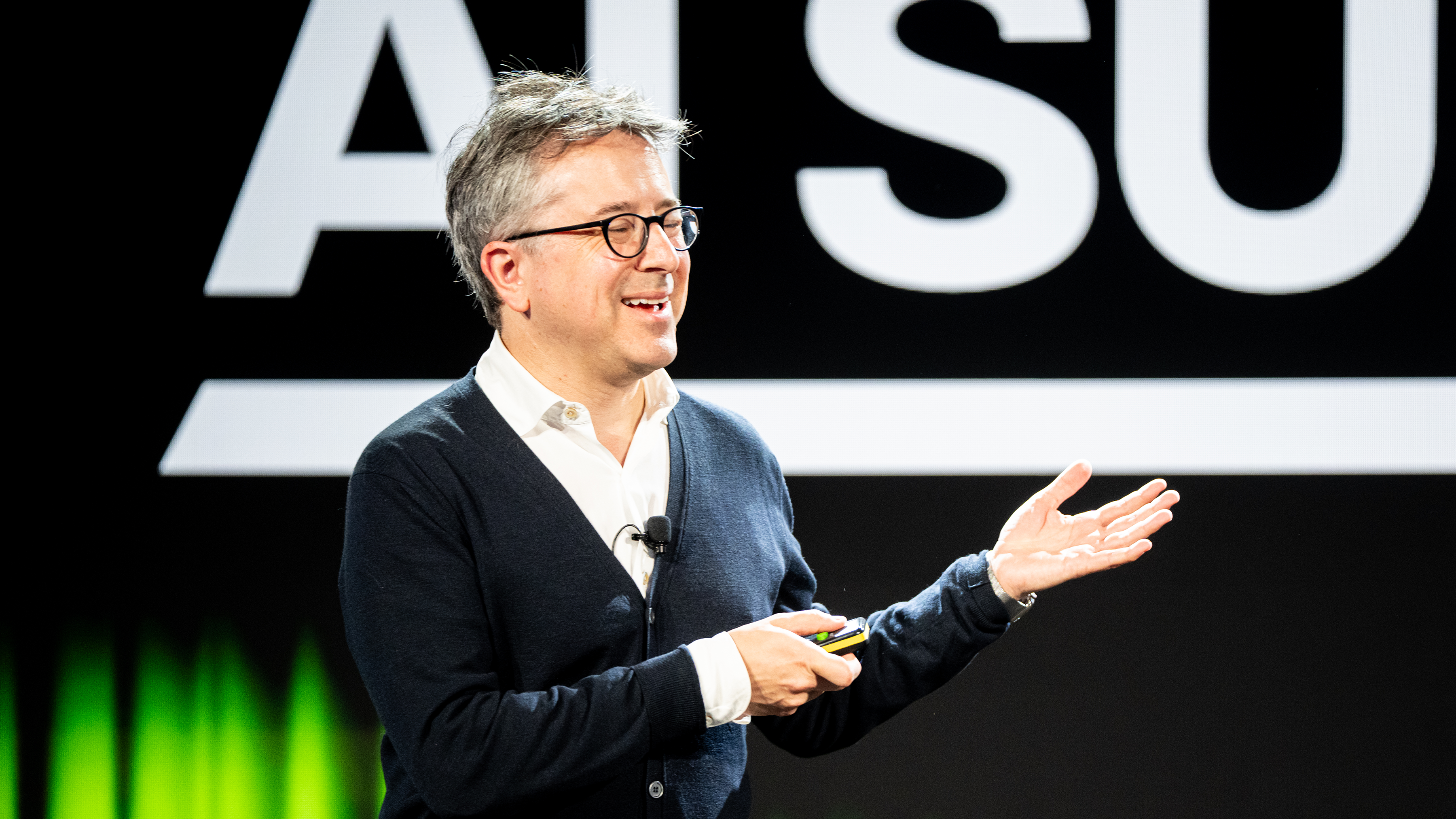Transform retail operations with Zebra’s retail technology solutions, featuring hardware and software for improving inventory management and empowering teams.
Streamline operations with Zebra’s healthcare technology solutions, featuring hardware and software to improve staff collaboration and optimise workflows.
Enhance processes with Zebra’s manufacturing technology solutions, featuring hardware and software for automation, data analysis, and factory connectivity.
Zebra’s transportation and logistics technology solutions feature hardware and software for enhancing route planning, visibility, and automating processes.
Zebra's public sector technology solutions enhance decision-making, streamline operations, and safeguard communities with advanced software and rugged hardware.
Zebra's hospitality technology solutions equip your hotel and restaurant staff to deliver superior customer and guest service through inventory tracking and more.
Zebra's market-leading solutions and products improve customer satisfaction with a lower cost per interaction by keeping service representatives connected with colleagues, customers, management and the tools they use to satisfy customers across the supply chain.
Empower your field workers with purpose-driven mobile technology solutions to help them capture and share critical data in any environment.
Zebra's range of mobile computers equip your workforce with the devices they need from handhelds and tablets to wearables and vehicle-mounted computers.
Zebra's desktop, mobile, industrial, and portable printers for barcode labels, receipts, RFID tags and cards give you smarter ways to track and manage assets.
Zebra's 1D and 2D corded and cordless barcode scanners anticipate any scanning challenge in a variety of environments, whether retail, healthcare, T&L or manufacturing.
Zebra's extensive range of RAIN RFID readers, antennas, and printers give you consistent and accurate tracking.
Choose Zebra's reliable barcode, RFID and card supplies carefully selected to ensure high performance, print quality, durability and readability.
Zebra's rugged tablets and 2-in-1 laptops are thin and lightweight, yet rugged to work wherever you do on familiar and easy-to-use Windows or Android OS.
With Zebra's family of fixed industrial scanners and machine vision technologies, you can tailor your solutions to your environment and applications.
Zebra’s line of kiosks can meet any self-service or digital signage need, from checking prices and stock on an in-aisle store kiosk to fully-featured kiosks that can be deployed on the wall, counter, desktop or floor in a retail store, hotel, airport check-in gate, physician’s office, local government office and more.
Adapt to market shifts, enhance worker productivity and secure long-term growth with AMRs. Deploy, redeploy and optimize autonomous mobile robots with ease.
Discover Zebra’s range of accessories from chargers, communication cables to cases to help you customise your mobile device for optimal efficiency.
Zebra's environmental sensors monitor temperature-sensitive products, offering data insights on environmental conditions across industry applications.
Zebra's location technologies provide real-time tracking for your organisation to better manage and optimise your critical assets and create more efficient workflows.
Enhance frontline operations with Zebra’s AI software solutions, which optimize workflows, streamline processes, and simplify tasks for improved business outcomes.
Empower your frontline with Zebra Companion AI, offering instant, tailored insights and support to streamline operations and enhance productivity.
The everything you need to rapidly and cost effectively develop high-performance AI vision applications on Zebra mobile computers.
Zebra Workcloud, enterprise software solutions boost efficiency, cut costs, improve inventory management, simplify communication and optimize resources.
Keep labour costs low, your talent happy and your organisation compliant. Create an agile operation that can navigate unexpected schedule changes and customer demand to drive sales, satisfy customers and improve your bottom line.
Drive successful enterprise collaboration with prioritized task notifications and improved communication capabilities for easier team collaboration.
Get full visibility of your inventory and automatically pinpoint leaks across all channels.
Reduce uncertainty when you anticipate market volatility. Predict, plan and stay agile to align inventory with shifting demand.
Drive down costs while driving up employee, security, and network performance with software designed to enhance Zebra's wireless infrastructure and mobile solutions.
Explore Zebra’s printer software to integrate, manage and monitor printers easily, maximising IT resources and minimising down time.
Make the most of every stage of your scanning journey from deployment to optimisation. Zebra's barcode scanner software lets you keep devices current and adapt them to your business needs for a stronger ROI across the full lifecycle.
RFID development, demonstration and production software and utilities help you build and manage your RFID deployments more efficiently.
RFID development, demonstration and production software and utilities help you build and manage your RFID deployments more efficiently.
Zebra DNA is the industry’s broadest suite of enterprise software that delivers an ideal experience for all during the entire lifetime of every Zebra device.
Advance your digital transformation and execute your strategic plans with the help of the right location and tracking technology.
Boost warehouse and manufacturing operations with Symmetry, an AMR software for fleet management of Autonomous Mobile Robots and streamlined automation workflows.
The Zebra Aurora suite of machine vision software enables users to solve their track-and-trace, vision inspection and industrial automation needs.
Zebra Aurora Focus brings a new level of simplicity to controlling enterprise-wide manufacturing and logistics automation solutions. With this powerful interface, it’s easy to set up, deploy and run Zebra’s Fixed Industrial Scanners and Machine Vision Smart Cameras, eliminating the need for different tools and reducing training and deployment time.
Aurora Imaging Library™, formerly Matrox Imaging Library, machine-vision software development kit (SDK) has a deep collection of tools for image capture, processing, analysis, annotation, display, and archiving. Code-level customisation starts here.
Aurora Design Assistant™, formerly Matrox Design Assistant, integrated development environment (IDE) is a flowchart-based platform for building machine vision applications, with templates to speed up development and bring solutions online quicker.
Designed for experienced programmers proficient in vision applications, Aurora Vision Library provides the same sophisticated functionality as our Aurora Vision Studio software but presented in programming language.
Aurora Vision Studio, an image processing software for machine & computer vision engineers, allows quick creation, integration & monitoring of powerful OEM vision applications.
Adding innovative tech is critical to your success, but it can be complex and disruptive. Professional Services help you accelerate adoption, and maximise productivity without affecting your workflows, business processes and finances.
Zebra's Managed Service delivers worry-free device management to ensure ultimate uptime for your Zebra Mobile Computers and Printers via dedicated experts.
Find ways you can contact Zebra Technologies’ Support, including Email and Chat, ask a technical question or initiate a Repair Request.
Zebra's Circular Economy Program helps you manage today’s challenges and plan for tomorrow with smart solutions that are good for your budget and the environment.

Transforming Patient Care Through Technology
As we mark the last day of National Nurses Week in the U.S., Zebra’s Chief Nursing Information Officer and Healthcare Industry Principal, Kassaundra McKnight-Young offers an inspiring glimpse into the evolving role of technology in healthcare. Transitioning from over 31 years on the frontline, she remains dedicated to enhancing patient care by integrating innovative solutions that empower clinicians. Kassaundra passionately discusses her mission to alleviate the burden on nurses, allowing them to focus more on patient care. She also shares her insights on how healthcare professionals can cultivate skills that drive better outcomes and satisfaction. In addition, Kassaundra provides strategic advice on how to leverage technology effectively, emphasizing the importance of choosing solutions that truly enhance clinical practices and align with broader organizational goals.
Q: You’ve been a part of Zebra Nation for a year now after serving on the frontline of healthcare for many years. What has been the biggest transition for you over the past year and how have you enjoyed your time at Zebra?
A: Over the past 31+ years on the frontline of healthcare — and the last 16 as a dedicated nurse — my focus has remained steady: caring for patients and championing clinicians through thoughtful technology adoption. While my airline miles and hotel points have certainly increased, the core of my mission hasn’t changed.
In my current role at Zebra, I’ve been able to scale that impact, supporting both patients and clinicians on a broader level. For over a decade, I’ve been at the forefront of integrating technology to empower those who deliver care, and now, I’m doing that work with even greater reach. Weekly travel has become part of the rhythm — collaborating with partners, clients, and colleagues across the country.
What’s changed is the how—with more space to grow, more opportunity to lead, and a wider net of influence. The purpose? That remains as clear as ever.
Q: Your passion is aligned to your objective to streamline nursing tool belts and address the noise impacting nursing care and emotional well-being, with the aim of supporting clinicians at the bedside. Why is this important to you?
A: At my core, I am — and will always be — a nurse first. No matter how exciting or innovative my work as an informaticist becomes, that truth grounds everything I do. I still occasionally step back into the role of a floor nurse, not only to stay connected but to feel the real-time challenges our clinicians face at the bedside. I want every nurse to know: they matter. Their voices, their experiences, and their well-being matter.
Although I stepped away from full-time bedside care nearly 12 years ago, my passion for nurses and the patients they serve has never wavered. In fact, it’s only deepened. This work — this mission — is my calling. Ironically, I never set out to be a nurse. But today, I couldn’t imagine doing anything else. If I could go back, I’d choose nursing as my first degree, not Biology. But I digress.
Nurses want to care for patients. That’s who we are. The burnout we’re facing isn’t from patient care itself — it’s from the noise that surrounds it. We’re overwhelmed not by the “why,” but by the “how.” I recently read a study showing nurses spend up to 41% of their time documenting. That’s staggering. That leaves little time not only for thorough patient care but for even the most basic personal needs — eating, resting, taking a breath.
Clinicians are drowning in inefficiencies: hunting for essential equipment, troubleshooting tech, juggling too many devices, being messengers between systems and providers, and using tools that were never designed to support the reality of patient care. Sometimes, it feels like we need a backpack instead of a tool belt just to do our jobs. And when the technology we rely on adds to the burden instead of lifting it, everyone suffers — patients and clinicians alike.
This is why I do what I do. My purpose is clear: to transform the experience at the bedside, to remove the noise, and to let nurses get back to what they do best — caring for people. That’s the real goal. That’s the change I’m here to make.
Q: Your expertise focuses on enhancing patient outcomes, increasing satisfaction for both patients and clinicians, and achieving organizational financial and strategic objectives. How can other clinicians develop these skills?
A: Thinking outside the box isn’t just a skill I have — it’s how I approach every challenge. In a world of rapidly advancing technologies, innovation starts with imagining the ideal solution first, without immediately questioning if it’s possible. Once that vision is clear, the real work begins adjusting it to meet reality.
But to do this kind of work — work that changes lives — you need more than just strategy. You need passion. There must be something deep within you that’s driven to improve the status quo in healthcare.
Yes, we often hear the phrase, “never stop learning”— and I wholeheartedly agree. But I’d add this: never stop caring. Never stop being present in healthcare. Because while we may not be able to solve every issue, we can tackle one at a time — and when we do, we often create a ripple effect of improvement.
Another essential ingredient? Experience. To be truly effective, you have to understand the perspectives of everyone you aim to support. Be a patient. Be a nurse. Be a physician, a transporter, an ancillary team member. Maybe not literally, but you can walk in their shoes — through shadowing, interviews, or time spent observing their work. This kind of empathy fuels insight, and that insight shapes better, more meaningful solutions.
Of course, continued learning — through degrees, certifications, conferences, and seminars — is important. But pairing knowledge with heart and firsthand perspective? That’s where real impact begins.
Q: What is your advice to others in the healthcare industry in how to best leverage technology to help ensure they are providing the best patient care?
A: The technology you choose must make both sense — and cents. Every solution should be evaluated not just for its innovation, but for its true impact. You have to ask the right questions:
- What value does this technology deliver?
- Does it improve measurable outcomes like HCAHPS scores, fall rates, or hospital-acquired pressure injuries (HAPIs)?
- What about the intangible benefits — does it work in real-world clinical settings?
- What’s the return on investment financially — and more importantly, what’s the return on outcomes for patients and clinicians?
It’s not just about adding another tool — it’s about strategic integration. Can this solution replace or consolidate existing technologies? Will it reduce complexity and create efficiencies? And how well does it align with the organization’s roadmap for growth and expansion?
Technology must address immediate pain points and be scalable to support future challenges and strategic goals. The total cost of ownership is more than a price tag — it includes direct costs, but also the long-term savings and value realized from implementation.
In short, smart technology isn’t just an expense — it’s an investment in better care, better outcomes, and a more sustainable future.
Zebra Developer Blog
Zebra Developer BlogZebra Developer Blog
Are you a Zebra Developer? Find more technical discussions on our Developer Portal blog.
Zebra Story Hub
Zebra Story HubZebra Story Hub
Looking for more expert insights? Visit the Zebra Story Hub for more interviews, news, and industry trend analysis.
Search the Blog
Search the BlogSearch the Blog
Use the below link to search all of our blog posts.
Most Recent
Legal Terms of Use Privacy Policy Supply Chain Transparency
ZEBRA and the stylized Zebra head are trademarks of Zebra Technologies Corp., registered in many jurisdictions worldwide. All other trademarks are the property of their respective owners. Note: Some content or images on zebra.com may have been generated in whole or in part by AI. ©2025 Zebra Technologies Corp. and/or its affiliates.




